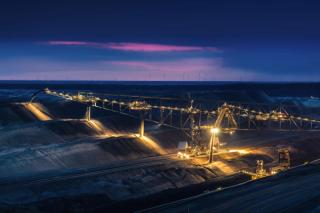
Cultural heritage: Indigenous and cultural heritage values driving sustainable development
by Flavia Kiperman
View post

In the summer of 2019, the UK Government legislated its net zero target by 2050, backed up by the publication of its net zero strategy [1] in October 2021. The strategy documents the Government’s ’10-point plan for a green industrial revolution’ and focuses on decarbonization pathways to net zero by 2050.
However, the reality of achieving net zero is extremely complex, relying on the development of innovative technologies, the upscaling of renewable energy projects, and the swift implementation of carbon-neutral practices.
A key focus for the Government is renewable energy, particularly solar and wind. But is the current consenting landscape conducive to the rapid delivery of large-scale energy projects required to meet the government’s ambitious timescales?
There are complexities that have an impact both individually, or prove challenging in conjunction with one another, and these have the potential to propel or hinder the delivery of onshore renewable energy projects across the UK.
A substantial challenge for developers working on onshore renewable energy projects across the UK is the different consenting regimes and complex legislation that changes depending on whether the project is to be installed in England, Scotland, Wales, or Northern Ireland.
For example, for wind, solar and/or energy storage development of less than 50 MW in Scotland, the application must be made to the Local Authority to obtain planning. For projects of more than 50 MW in Scotland, a Section 36 consent must be obtained. In this instance, it is determined by Scottish Ministers and administered by the Scottish Government Energy Consents Unit.
By contrast, in England an onshore wind farm requires planning permission from the local authority, regardless of scale, whereas any other onshore electricity generating station of more than 50MW is classed as a ‘Nationally Significant Infrastructure Project’ and requires a Development Consent Order (DCO) which is determined by the Secretary of State and administered by the Planning Inspectorate.
Wales has its own distinct consenting requirements, with electricity generating stations over 10 MW being deemed ‘Development of National Significance’ and requiring consent from the Welsh Ministers (unless they exceed 350 MW in which case they are determined by the Planning Inspectorate, as noted above for English projects). Smaller developments in Wales require planning permission from the local authority.
In Northern Ireland, the important threshold is 30 MW, below which projects require planning permission from the local divisional planning office. Projects above 30 MW may be determined either by the same route or by the Department for Infrastructure, subject to consultation.
Developers wanting to install renewable energy sites across the UK need to contend with consenting regimes that are different depending on the scale, size, and type coupled with the different legislation based on which region they are looking to work in. The different regimes in each of the UK’s nations have clearly been designed by the respective governments to provide what they consider to be a suitable planning process. However as summarized above, the result is a complex picture. The government is pushing for net zero collectively for the UK, but this race to net zero could be hindered by the current planning landscape. The minefield of different thresholds, who you submit to, who it is determined by, what information needs to be submitted and the timescales of agreement, may cause delay and occupy already constrained resources, for developers who want to work at scale and pace to implement renewable energy projects in the UK.
Additional significant considerations and possible barriers to the installation of onshore renewable energy projects include landscape and environmental sensitivities, as well as grid connection and capacity.
Differing from region to region, and varying hugely dependent on proximity to urban settings, terrain, and natural resources, developers will be well aware that they must undertake detailed landscape and environmental assessments at each and every proposed location to fully understand the sensitivities, potential impacts, and opportunities for mitigation and enhancement.
Furthermore, grid connection and capacity must be examined carefully by developers before progressing with a proposed site. Anyone considering a renewable energy project needs to consider the scale and how it can be delivered. Planning a large-scale, 60 MW onshore wind farm to discover further down the line that the grid capacity cannot cope with such a substantial project leads to disappointment and wasted investment of time and money.
For developers with limited local knowledge of all the projected locations in their pipeline, grid constraints and landscape and environmental sensitivities, unmastered, may hinder the progress of their installation projects and, ultimately, prevent the government from meeting its net-zero targets.
Using specialists who can advise on grid connection options, environmental and social impacts can remove this barrier, and provide developers with granular local insight and knowledge that can help both with scoping viable locations but also the planning process.
Legislation that differs from region to region, environmental and landscape sensitivities, and an understanding of grid capacity and connectivity are all critical to the success of onshore renewable energy projects. However, even more important is understanding them all in conjunction with one another.
Taking a holistic approach that draws all three together and considers them collectively is the path most likely to lead to a positive outcome.
Reviewing all influencing factors collectively is the way to streamline the planning stages and ensure greater success rates.
Fully understanding the capacity capabilities of a proposed site as early on as possible will save valuable resources and costs, enabling developers to focus their efforts elsewhere.
Planning and consenting are major elements to onshore renewable energy projects, but often also major barriers.
Developers need support and guidance to navigate projects and understand timescales, but It is important that this is done in conjunction with researching and understanding both grid capacity and connectivity as well as the potential landscape and environmental sensitivities. Getting good, experienced advice at an early stage is crucial to success and meeting proposed timescales.
Specialists who have knowledge of both local and national planning legislation, as well as an understanding of the environmental sensitivities and grid constraints, means each project can be managed or guided by a consultant who has likely dealt with this process within a similar location before, and who understands the thresholds that impact the route to obtaining planning permission.
When faced with a planning landscape with differing consenting regimes, technical requirements relating to grid capacity, as well as local sensitivities, partnering with experienced consultants can help to streamline the process for developers, and ultimately help the UK reach its net zero goals.
This article appeared in Renewable Energy World in June 2023.
----------------
References
[1] https://www.gov.uk/government/publications/net-zero-strategy

by Flavia Kiperman

by Jasper Schrijvers , Matthew Hoare

by Clodagh Connolly, Nicola Inge, Andres Schottlaender